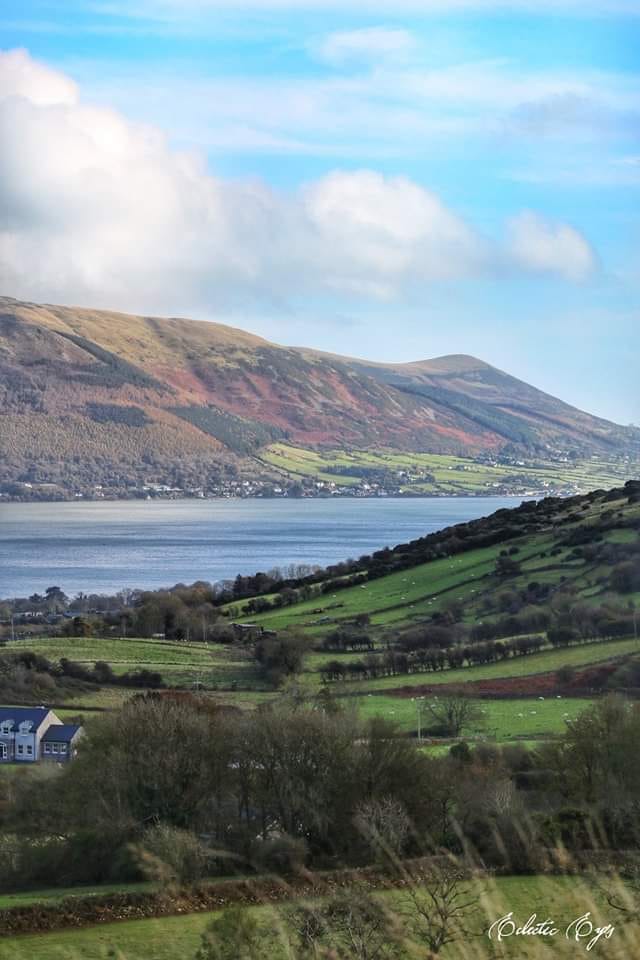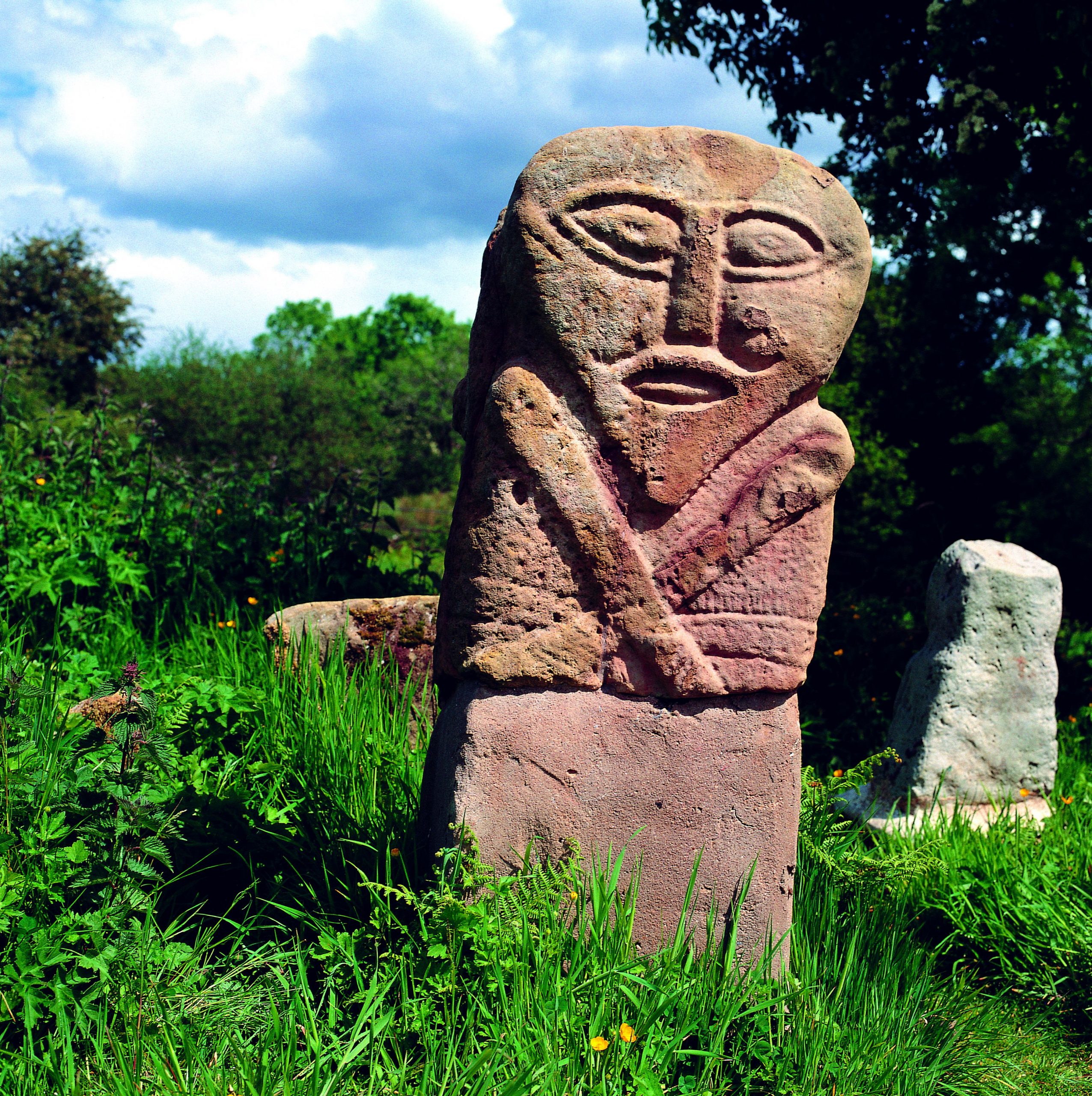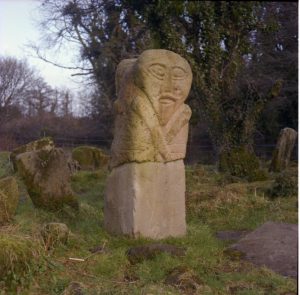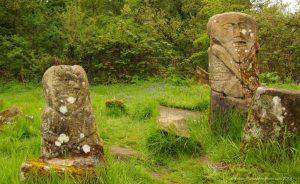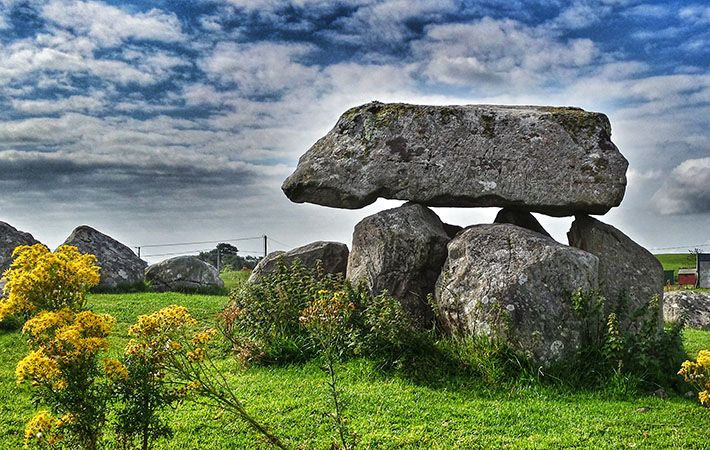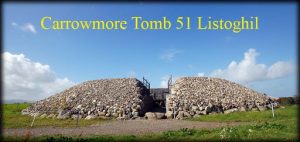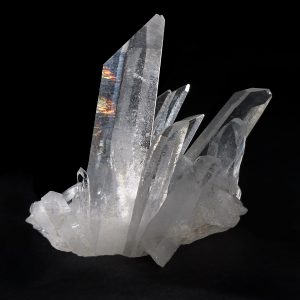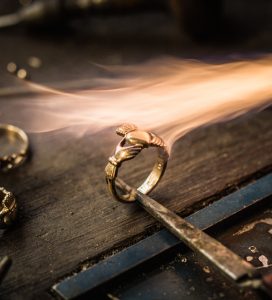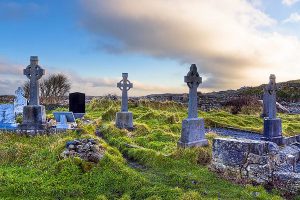One of the more recurrent punishments suffered by those who offend the good folk is that of sight being afflicted, or even going so far as physical damage to the eyes.
A story from my own locale tells of a man named Malone who tried to flatten one of the nearby fairy hills, Rathvilly Moat, only to have eye poked out.
Malone arrived at the hill to make sure that the workers were destroying the mound as he had instructed, but the workers were purposefully delaying because they did not want a curse to fall upon them for offending the fairies believed to reside within the mound.
Malone, tried to take over the job himself, and began to dig into the moat.
He then saw that a hole appeared in the earth near where he was digging and he proceeded to push his cane down inside it.
When he lay down to peer inside, his cane was then thrust upwards, instantly blinding him in one eye.
The full account has been preserved in the folklore archives here: https://www.duchas.ie/en/cbes/5044686/5032013
There is also another tale of a man who decided to search for the hidden entrance into the mound, as legend speaks of a great treasure inside the moat, and so the man spent the day digging around the thorn-bushes and growth which surround it. Although he dug and dug, he could not find the entrance and decided to finally give up and go home. As he was leaving he noticed a huge amount of crows surrounding the mound and cawing loudly.
When he arrived back at his house he began to bleed from his eyes until the next morning.
Needless to say, he did not go looking for a secret entrance into the moat again!
In Wentz’s Fairy Faith in Celtic Countries there are stories which echo this phenomenon of fairies taking the sight of humans who disrespect them.
(It must be said, though, that often the disrespect is not intended, and the fairies are sometimes portrayed as being quite cruel with the level of their punishments.)
One famous example describes how a midwife is taken by the fairies to assist in the birth of a fairy child.
Quite why the fairies need human help has been argued about by scholars for a long time.
One theory put forward is that these are changeling children: half-fairy, half-human and so the physiological differences require human help.
In this account, then, the human midwife is returned to the human world following the fairy birth. Before leaving she notices some of the other women rubbing water on their eyes from a basin and so she does the same.
Months later she spots the fairies wandering around a local market. No other human seems to notice them. When she approaches the fairies and tells them that she remembers them from the birth they ask her which eye she can see them with.
They then blow onto her eye and blind her permanently.
In some versions the fairies are even more cruel and take away the woman’s sight in both eyes.
Now, let me reiterate, there are many variations of this story. Here are a few more:
https://folklorethursday.com/…/fairy-midwife-magic…/
https://sacred-texts.com/neu/eng/efft/efft20.htm
Also, here is an excellent paper on the phenomenon of fairy ointment and the deeper esoteric and metaphysical connotations by Neil Rushton.
https://deadbutdreaming.wordpress.com/…/visioning-the…/
When we examine the motif of an eye or sight being sacrificed for secret wisdom or initiation we find ourselves in deep, mythological and spiritual waters.In Ireland, St. Brigid was said to have plucked out her own eye in order to demonstrate her intention to give her life to God.
And, of course, Odin deliberately sacrificed an eye in order to drink from the waters of Mimir’s well at the bottom of the world tree, Yggdrasil, thus giving him access to all of Mimir’s wisdom.
The eye is symbolic of perception in a mystical and esoteric sense. The idea of giving up everyday sight for a different type of seeing is describing the willingness to embark upon an inner journey and a rejection of the mundane world.
The English philosopher and writer, Gary Osborn, redrew attention to the symbolism of the inner eye which was alluded to in many, ancient esoteric texts. Osborn wrote of a third eye, spiritual triad constituted of the pineal and pituitary glands, as well as thalamus, which is the real revelation here.
Osborn goes against the grain in that he argues the importance of the pineal is an “occult blind”.
Backing Osborn up on this is recent research demonstrating that the area of the thalamus is often over-active in those who report mystic episodes and paranormal experiences involving supernatural entities.
Which brings us back to fairies…
The idea that certain people can see both the human world and, at times, the fairy Otherworld, is intimately connected to those who accept the role of seer, witch, shaman in Asian cultures, and witchdoctors and medicine people.
As we have explored before, sometimes this role is determined by a sickness or accident befalling the person, whereas on other occasions the spirits/ ancestors and those called fairies will seek the individual out themselves.
So, might some of the incidents which seem to be punishments actually be the misunderstanding of the fairy purpose, or even a persons fear of taking up the role the fairies have decided that they must fulfil?
I have written about this idea before and it is one which is worth reiterating.
Professor Éva Pócs, in her paper, Small Gods, Small Demons: remnants of an Archaic Fairy Cult in Central and South-Eastern Europe’ writes, “One common motif is a serious illness that the selected individual needs to undergo, as well as punishment by the fairies of any reluctant candidates.”
So, as we can see, it is well known in ancient cultures that the fairies will punish those who refuse to take up their role as healer or communicator between worlds.
My own sense is that often this is not always understood by the failed practitioner: sometimes a person may inadvertently say no to the fairy request, simply because they do not have the understanding or inner sight to comprehend what is being asked.
In these cases, then, might some of what we understand as fairy punishments be, in fact, the consequences of this disconnect?
Ireland has a long tradition of ‘fairy darts’, ‘elf-shot’ and wounding encounters with the Other Crowd.
When this occurs, a person is pierced with these seemingly supernatural objects.
In terms of medicine men and the bean feasa, this was deemed to bestow an ability to heal the sick, see future events and deal with ancestral spirits.
However, from Medieval times in Ireland, a Christianised, negative connotation took over when a person reported such encounters: they had succumb to demons and fallen angels, instead!
Someone known to have had such an experience was cursed, from a religious point of view, even though local people, themselves, still had no hesitation in asking for advice and spells from such individuals.
This transition from being instinctively named a healer to that of an outcast or ‘cursed’ witch often depended upon the leniency and influence of the local priest and doctor.
Writing in Aboriginal Men of High Degree, A.P. Elkin describes an Australian Aboriginal account of a medicine man taken by ‘spirits’ into the sky world where an operation is performed on him by having quartz crystals inserted into his side. He could henceforth visit the sky and establish communication with the sky spirits and even be summoned by them.
The Aboriginal tribes of The Southern Murray region reflect the same beliefs as other Australian indigenous people which they say have been passed down in oral form for over 60’000 years.
Aboriginal cave art depicting these encounters with the sky-serpent spirits have been dated to at least 40’000 BCE.
At a deeper time-depth, are the paintings of the San people of Botswana and what is today South Africa. Many of these depict the figure of the ‘wounded man’, a medicine man who has travelled to the spirit world and is cut open by the spirits in order to have magic stones placed inside his body.
The earliest San paintings are currently dated to 70’000 BCE but according to archaeologist, Chris Henshilwood, some may be revised further to 100’000 BCE.
The Wounded Man motif is one which can be applied to higher deities such as Odin, who visit the spirit world and are pierced by a supernatural object, or lose a body part, as we have already mentioned, in order to gain Otherworldly wisdom.
This tradition even appears subtly in the context of Jesus, the sun god, being pierced in his side before he enters the ‘kingdom’.
In San tradition, a healer may have all of their inner organs removed and replaced before being healed and put back together, or they may simply have a magic stone fired into them in the form of an arrow or dart.
As mentioned, in more recent Irish folklore, being struck by a fairy dart is considered exclusively hostile and the illness which these arrows bring are maladies to be vanquished.
What is being overlooked here is that these “shamanic” sicknesses are an essential aspect of the initiation process, and a medicine man or woman usually cannot become a fully reintegrated healer without going through these time-observed processes.
In fact, it is often argued by tribal elders that to attempt to avoid one’s fate as a spirit healer can bring about premature death or madness.
This is echoed in the research of Professor Pócs and European fairy lore, as I have already mentioned
This is very interesting within an Irish context, as many who found themselves struck by fairy darts were inhibited from following through on the traditional pathway because of church advice and witchcraft protocol.
As a result, the madness that these wounds were said to bring may in fact be consequences of an unfinished ritual as opposed to being the primary symptom of the elf-shot or fairy-dart.
So, am I arguing that fairies do not punish or take retribution on humans? No, of course not. The accounts of Malone at the start of this piece as well as many of the fairy midwife tales more than prove this is not the case.
However, I think it is beyond doubt that we must leave room for some of the fairy punishments being the result of an individual not fulfilling a destiny asked of them by the fairies or ancestral spirits.
Unfortunately, I also think that some cases are the result of ignorance and innocence: human time and fairy time may bring about a disconnect whereby fairies themselves may be unaware of just how much of an impact cultural changes have on tradition and ancestral connection.
A complex subject, to be sure, but, hopefully, one that is worth contemplating.
(C.) David Halpin.
Image: Brooke Shaden.






